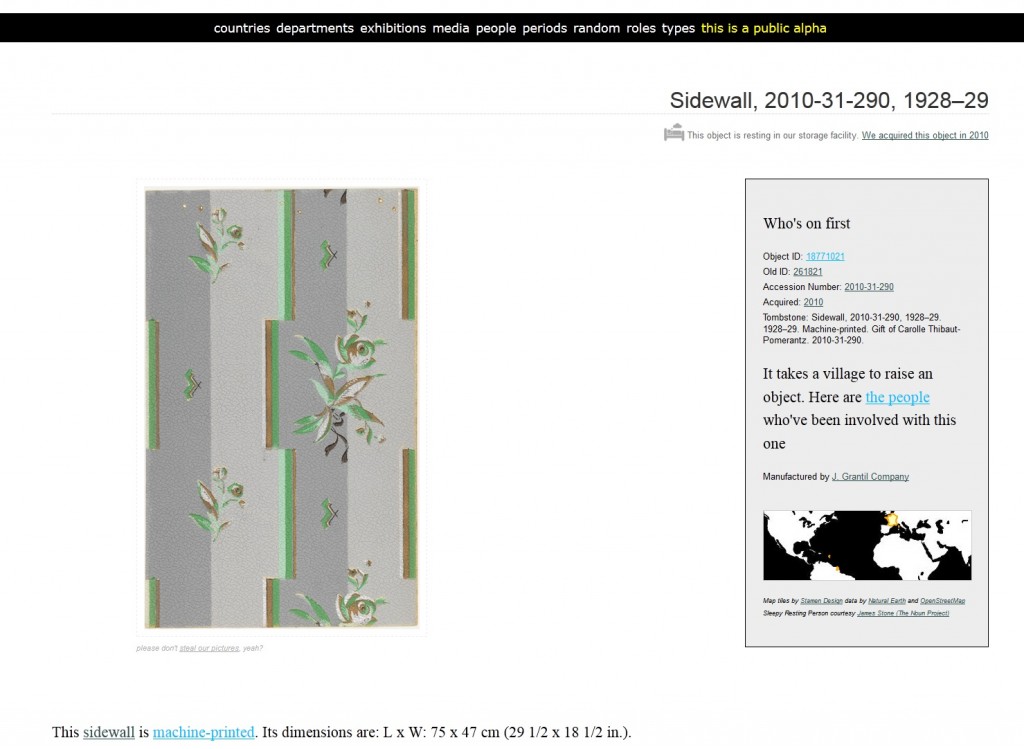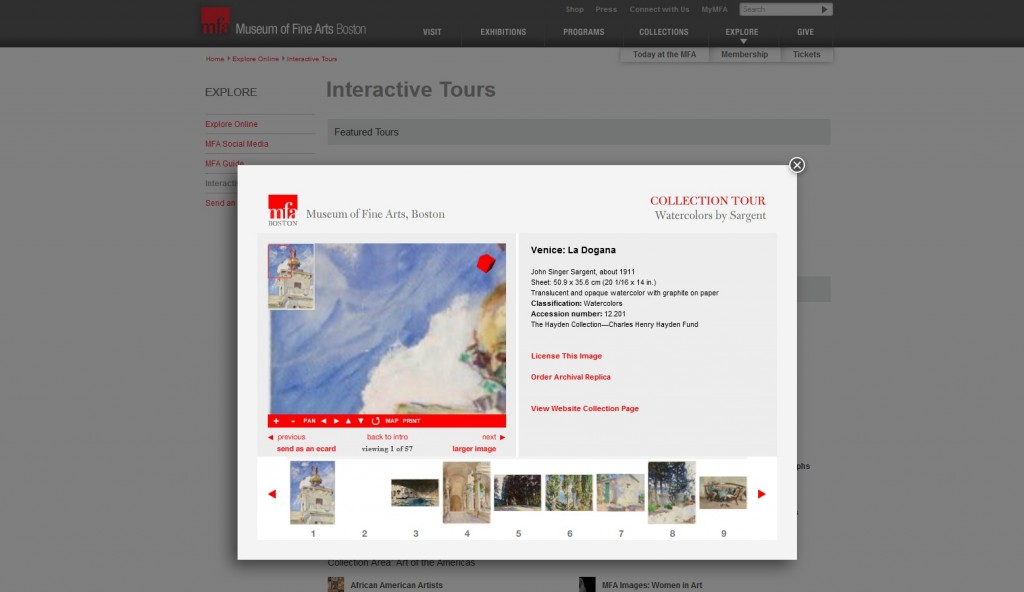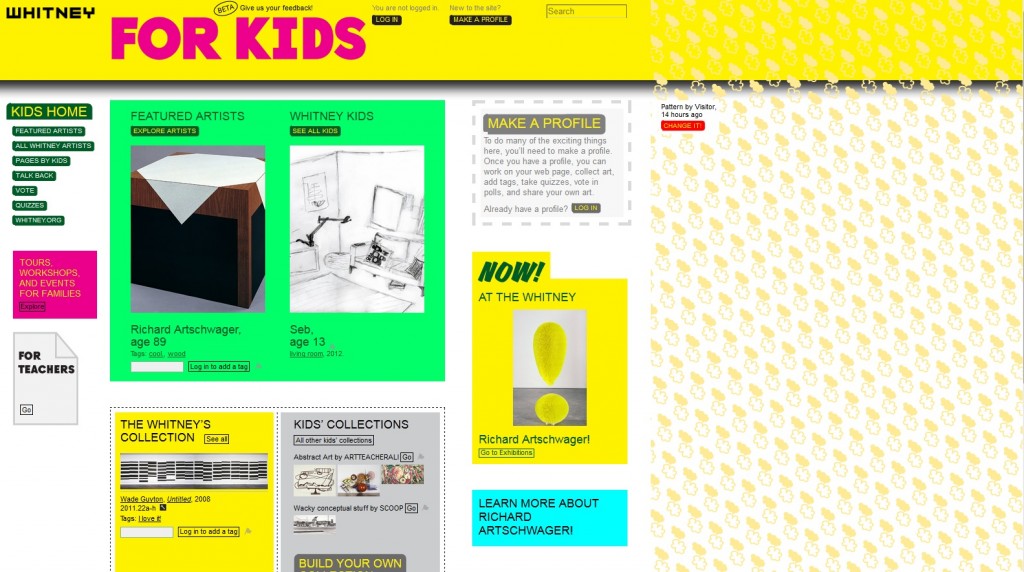I have a confession to make and I honestly can’t wait any longer to reveal it……I am addicted to online resources. Since becoming the Coordinator of Educational Resources, I have had a whole range of responsibilities regarding museum resources and their value on our institution. The truth is, although I love ALL things resources, I am particularly fascinated with the use of educational resources distributed online. With the ever expanding reach of the internet, students, teachers and visitors are now able to learn so much more from cultural institutions and their collections.
For me, creating online resources is quite exciting. One minute, I am typing a simple program on my computer, the next it is half way around the world and distributed all over the web for everyone to use. Whenever I create resources I think about multiple things like,
- Who are we creating these resources for? Will this resource be focused toward Teachers? Students? Visitors? Or all of the above?
- How valuable will these resource be to others using it? Am I creating a resource that others will find educationally valuable?
- Will they be able to use this without any issues? Are my resources clear for my audience to use?
- Are my resources clear for educators to use? Can this resource be used and adapted without complication?
So with my experience and guidelines, I decided to hunt down some examples of online Educational Resources being created by museums today and how they may be helpful for others.
- Smithsonian Cooper-Hewitt, National Design Museum (2 East 91st Street, New York, NY 10128)
A few months back I was lucky to attend a conference at the Rubin Museum that featured the Director of Digital and Emerging Media at the Smithsonian Cooper-Hewitt Museum Seb Chan and I was in awe of the vast resources they were producing. When I tried to explain his talk (see our previous post for video) to a friend outside of the “museum resources” field I simply responded, “He is like the rock-star of the digital resources world.” For me these resources use the internet as a key to unlock the door of a museum’s collection. A visitor can explore the museum’s collection at ease, find out more about “popular objects” in their “Object of the Day” section, and hear scholarly podcasts and videos featuring their curatorial staff. Overall, for me, the freedom as a user is extremely refreshing, easy to find but most importantly, educational.
- Museum of Fine Arts Boston (465 Huntington Avenue, Boston, MA 02115)
Besides being one of my favorite museum’s in the United States, I recently visited the Museum of Fine Arts website and was able to see some of the great things they were producing. I was specifically impressed with the Interactive Tour feature which uniquely allows visitors to explore individual works of art from sections of the museum intimately either on your own or as a guided experience. In addition the interactive experience allows the viewer to save images, order copies and zoom in to view details. Overall it is an incredible experience both for the classroom and for viewing at home.
- Whitney Museum of American Art (945 Madison Avenue at 75th Street
New York NY 10021)
Currently the Whitney Museum is planning their physical transformation for the future. From uptown to downtown, our new soon to be neighbors are already well known in the museum world for its fantastic American Art collection. But one thing that is not as well known for is their online resources. One example is their newly christened Whitney For Kids webpage (ages 8-12). As technology becomes wide spread over numerous age groups, the Whitney decided to create an online space just for kids, allowing the younger generation to have a voice in their opinions on art and even encourage them to create their own art. With museum education in mind, this tool could really help teachers build upon the pedagogical lessons of a museum trip or even a classroom lesson.
In addition check out their VLOG project which are amazing original short videos featuring Deaf museum educators communicating in American Sign Language (ASL). Resources like these help break down barriers and allows museums to be accessible to all visitors.
And while this list provides you with some of my personal favorites, there are TONS more museums throughout the world whose resources help bridge the scholarly to interactive education. To all the resource makers of the museum world, thank you!
To view some of the Rubin Museum of Art’s resources visit the following sites:
- Educational Interactive Library: http://interactive.rma2.org/
- Accessibility at the Rubin Museum: http://www.rmanyc.org/pages/load/62
- Explore Art Interactive Webpage: http://www.exploreart.org/
- Current Exhibition Resources: http://www.rmanyc.org/pages/load/180
- Resources for Educators and Parents: http://www.rmanyc.org/pages/load/40





